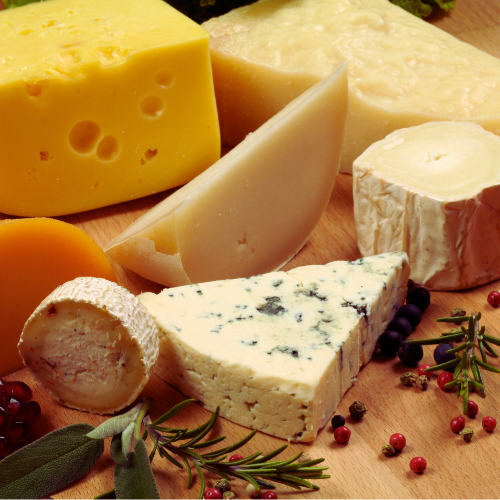- Regular Price
- £19.99
- Sale Price
- £19.99
- Regular Price
- £19.99
- Unit Price
- per


Cheese making, a timeless craft dating back millennia, intricately blends science and artistry to transform ordinary milk into a myriad of mouthwatering delights. From the initial selection of milk to the final stages of aging, the cheese-making journey is a symphony of precision, tradition, and innovation.
1. Selecting the Milk
The journey commences with a pivotal decision—the selection of milk. Whether it's the creamy richness of cow's milk, the tanginess of goat's milk, or the velvety nuances of sheep's milk, each variety imparts its distinctive signature to the final cheese product.
2. Milk Processing
Once the milk is chosen, it undergoes careful processing to create optimal conditions for cheese making. Processes may include pasteurization to eliminate harmful bacteria, homogenization for a uniform texture, or the addition of specific cultures to initiate the fermentation process.
3. Curdling the Milk
The magical transformation begins with curdling, achieved through the addition of rennet—an enzyme that coagulates the milk proteins, separating it into curds and whey. Factors like temperature, acidity, and the type of curdling agent used influence the size and texture of the curds.
4. Cutting and Draining the Curds
Carefully cutting the formed curds releases the whey trapped within. The size of the curds determines the cheese's texture, with larger curds yielding softer cheeses and smaller curds resulting in denser varieties. Draining follows, allowing excess whey to escape, leaving behind concentrated curds.
5. Cheese Molding
After draining, the curds are molded into shapes suitable for the desired cheese type. Whether iconic wheels or intricate molds for specialty cheeses, this step imparts each cheese with its distinct appearance.
6. Pressing
Pressing is a critical step in shaping the cheese and expelling additional whey. The duration and pressure applied during this phase influence the final texture, density, and moisture content of the cheese.
7. Salting
Salt, a transformative ingredient, is applied to the surface or incorporated into the cheese during various stages. Beyond enhancing flavor, salt acts as a preservative, contributing to the cheese's longevity and character.
8. Fermentation and Ripening
Once molded and salted, the cheese undergoes a journey of fermentation and ripening. Microorganisms, whether natural or introduced as starter cultures, work their magic, creating a symphony of flavors and aromas. Ripening room conditions, including humidity and temperature, play a crucial role in shaping the final product.
9. Aging
Certain cheeses undergo an additional aging phase, lasting weeks, months, or even years. This process imparts complexity, depth, and nuances, transforming a fresh creation into a culinary masterpiece.
10. Artisanal Mastery
Cheese making transcends a mere process; it is an art form mastered by skilled artisans. The expertise of the cheese maker, their intuitive understanding of ingredients, and the delicate balance of science and craftsmanship elevate each wheel of cheese into a culinary masterpiece.
In conclusion, cheese making is a symphonic journey—from the initial milk selection to the final aging process. This artisanal craft, steeped in tradition yet guided by innovation, continues to produce an array of cheeses that delight and tantalize taste buds worldwide. It stands as a testament to the profound relationship between humans and one of the oldest and most cherished foods—cheese.
Conclusion:
Dive Into your Mail Box: March 21st 2024
0 Item(s)
0 comments